What to Feed the Different Breeds of Chickens
The type of chicken feed you use can impact things like growth rate, egg laying, health, and appearance. You should carefully consider the age of your birds and what their purpose is when choosing the right feed. Here, we'll take a look at 10 different kinds of chicken feed and when they should be used.
1. Chick Starter
As the name implies, chick starter is fed to newly hatched chicks. This chicken feed is high in protein, usually around 20% – 25%. This extra protein gives the chicks the energy and building blocks they need to grow up fast and strong. Chick starter is usually medicated to help prevent a parasite called Coccidia.
This parasite can cause bloody diarrhea and can sometimes even kill chicks. Chickens eventually develop a natural resistance to Coccidia as their immune systems mature, but it's important to protect against it when chicks are still young.
Chick starter is usually used in the first 4 – 6 weeks before graduating to a grower feed. It's important to not use chick starter for too long, as the high protein levels can eventually cause liver damage. This type of chicken feed usually comes in crumbles and can look like sand or dirt. The fine texture of the feed makes it easier for chicks to grab and digest.
2. Grower Feed

Grower feed is the next step in chicken nutrition. It has less protein than chick starter – usually around 18% – but still has more protein than adult chicken feed.
This allows chicks to continue to grow into pullets (adolescent chickens) without putting too much strain on their livers. Grower feed is not medicated like chick starter is, so it's important you're supplementing any antibiotics or medications your pullets need.
This chicken feed usually comes in pellet form which will be larger and denser than the crumbles of chick starter. Some chicks have trouble switching over to eating pellets. If this happens, you can try breaking the pellets into smaller pieces that are still larger than crumbles.
Let your pullets eat the smaller pieces for a few days, then try graduating them to full-sized pellets. It can also help to feed a mix of chick starter and grower feed until your pullets get used to the new food.
Grower feed should be used until hens lay their first eggs, which usually happens around 20 weeks. The feeding stages of broiler birds are different, though, which we will look at in section 5.
3. Flock Raiser
Flock raiser is a generalized feed that covers basic nutritional needs. This type of chicken feed is usually used if you're not raising chickens for a specific purpose. Laying hens, broiler chickens, and show breeds should all get specialized feed once they reach maturity. We'll take a closer look at these types of feed in the next sections.
If you're raising a flock for company, pest control, natural mowing, or other non-specialized reasons, flock raiser is the feed to use. You can also use this feed if you have a mixed flock with roosters, ducks or other birds, or birds of multiple ages.
4. Layer Feed
Layer feed should be fed to egg-producing hens after they lay their first egg. This particular type of chicken feed is specially formulated with higher levels of calcium for better and stronger eggs. It is possible to feed laying hens a generalized flock feed and they will still produce usable eggs.
However, these eggs are susceptible to a variety of issues. These problems can include thin shells, small eggs, misshapen or lopsided eggs, eggs with wrinkled shells, and eggs without a yolk.
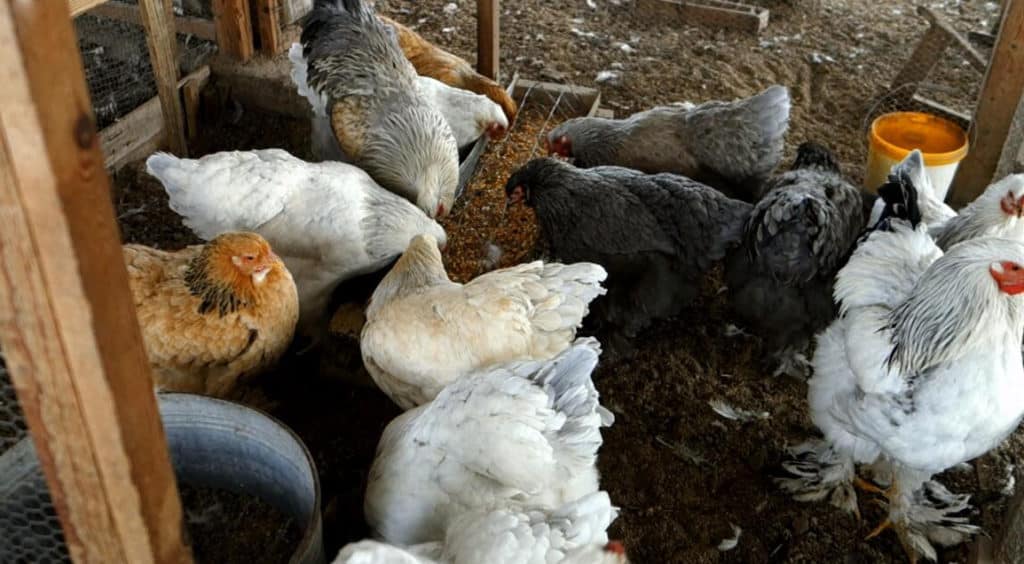
In addition to more calcium, this chicken feed will contain around 16% protein and the essential vitamins and layers need. The high levels of calcium can be dangerous, though, for birds not producing eggs. It can cause liver damage in chicks, roosters, older hens, and any additional birds you may have in a mixed flock.
If you want the best egg production possible from your layers, a good layer feed isn't optional. You should consider separating layers from the rest of the flock if you're worried about non-laying birds eating this food.
5. Broiler Feed
The different stages of feed we've looked at so far don't always apply to broilers. This is because broiler birds are specifically bred to grow as big as possible as fast as possible. They often have health problems due to their rapid growth but aren't meant to live long in the first place. Most broiler chickens are processed for their meat around 7 – 9 weeks old.
Most chicken feed designed for broiler birds is incredibly high in protein, usually around 25%. This allows them to grow quickly and build lots of muscle that translates into high meat yields.
The rapid growth and high levels of protein can put a strain on the chicken's heart, organs, and even legs. Many broiler chickens grow so rapidly that they can't move around easily.
The health of these birds is still important, though, as you want them to last to a good butchering age and produce quality meat. Some farmers will start broiler chicks out with a general broiler feed as it has the same protein levels of chick starter. This isn't a good idea, though, as this feed won't be medicated to protect against chicken parasites.
Chick starter should still be given to broiler chicks till they are around 4 weeks old. After that, they should be switched to a broiler feed. Though the protein levels are similar, this feed will contain other vitamins and minerals adult broilers will need as they grow.
6. Game Bird Feed
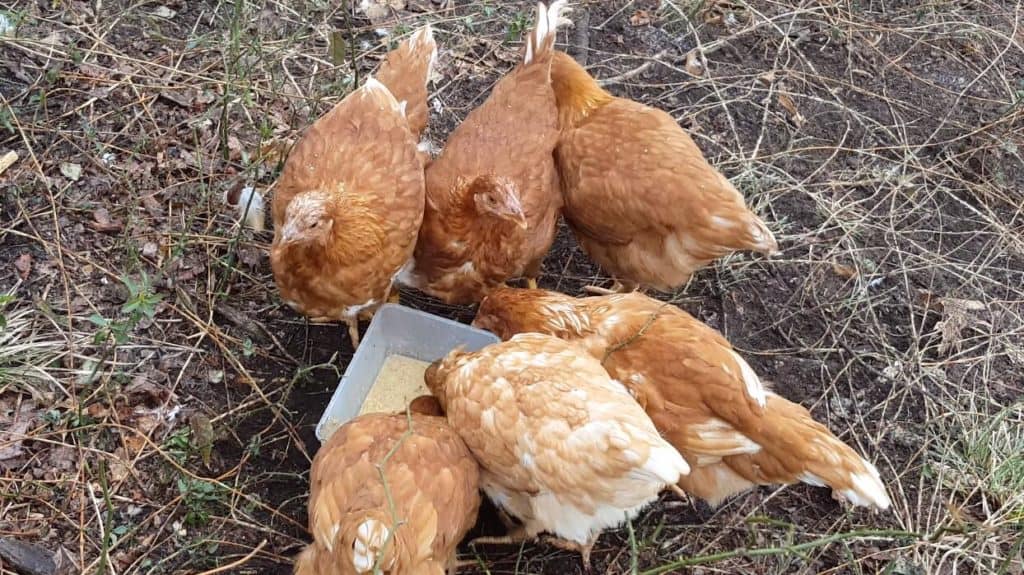
This type of chicken feed is usually fed to show birds. It also contains high levels of protein for fast, healthy growth and shiny feathers. The protein levels in show chicken feed won't be as high as broiler feed and doesn't contain as much calcium as layer feed.
Chicken feed for show birds is generally a high-quality, expensive feed that will contain specialty ingredients. These ingredients often include black oil sunflower seeds, organic vegetables like peas and alfalfa, and even cricket meal. Show birds don't usually forage for food as this would increase their risk of injury.
Because of this, their food needs to contain a variety of ingredients that reflect what they would normally find in nature. Game bird feed also has a variety of supplemental minerals and vitamins to help with aesthetic attributes. These include things like feather thickness and color, comb and wattle shape, and shape, size, and height of the bird.
Game chicken feed is occasionally fed to older birds or birds with failing health, especially in the winter. The higher quality of the feed and the special ingredients can help bolster fading chickens. However, due to the expense, you probably don't want to use this as your regular feed for the whole flock.
7. Shell Grit
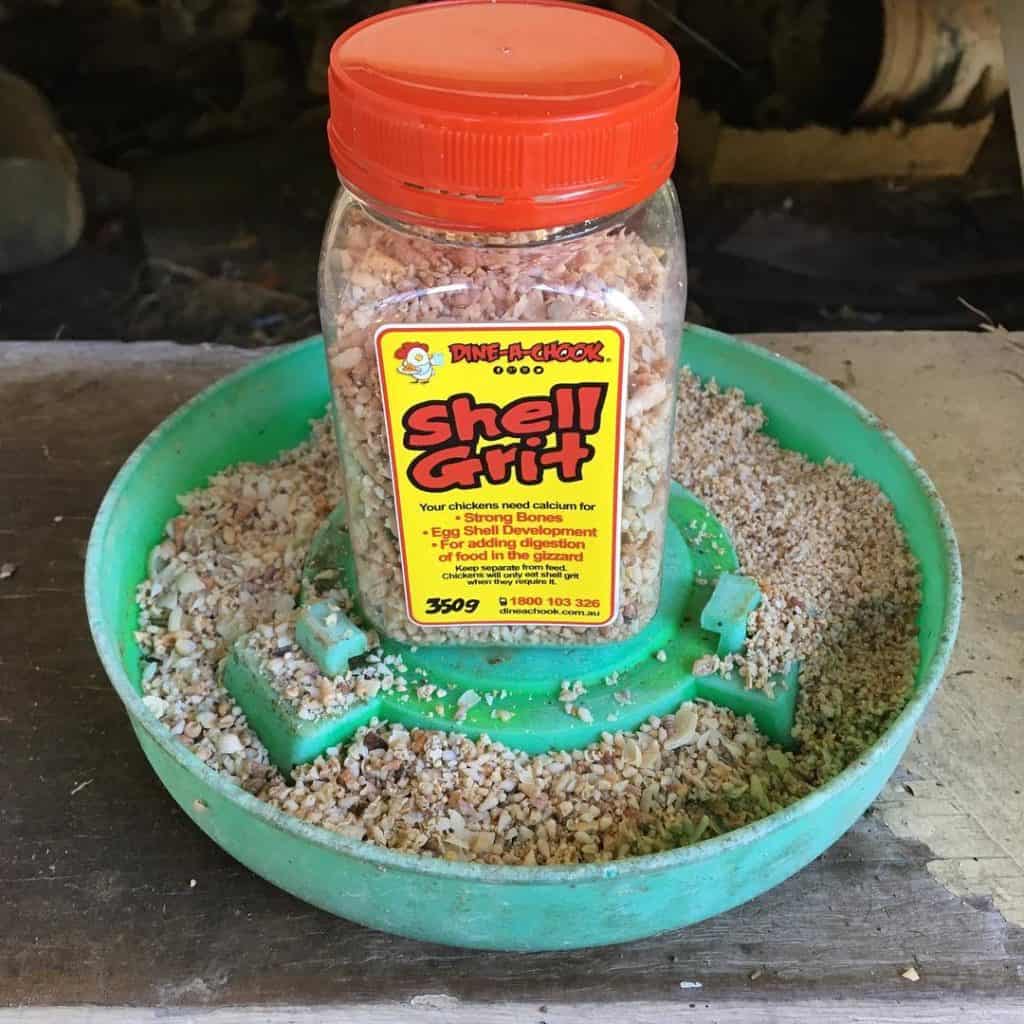
Grit is a component of chicken feed that is often overlooked. It is important that chickens get enough grit in their diet as it helps with digestion and egg production. Shell grit acts as an extra source of calcium for laying chickens. This will help supplement their feed and increase their chances of laying a lot of high-quality eggs.
Most chickens are good at not eating additional calcium if it's not needed, so serving size isn't important. Grit is also important for all chickens – not just layers – as it helps with digestion. Grit is stored in a chicken's gizzard and helps break down food.
If chickens are free-range or allowed to roam, they can usually find the grit they need in nature. Chickens that are kept in a coop or enclosure should have grit added to their feeding routine. You can do this naturally by grinding up some eggshells into their chicken feed. You can also buy commercial grit that is either soluble or insoluble.
Soluble grit is usually made of finely ground oyster shells, cockle shells, and/or limestone. Insoluble grit is usually made of ground granite or flint. Commercial grit will often have charcoal added as well since it will further aid in digestion.
You should always get the right size grit for your chicken's age. Grit that is too fine will pass through their system and not get caught in the gizzard where it is needed.
8. Chicken Scratch
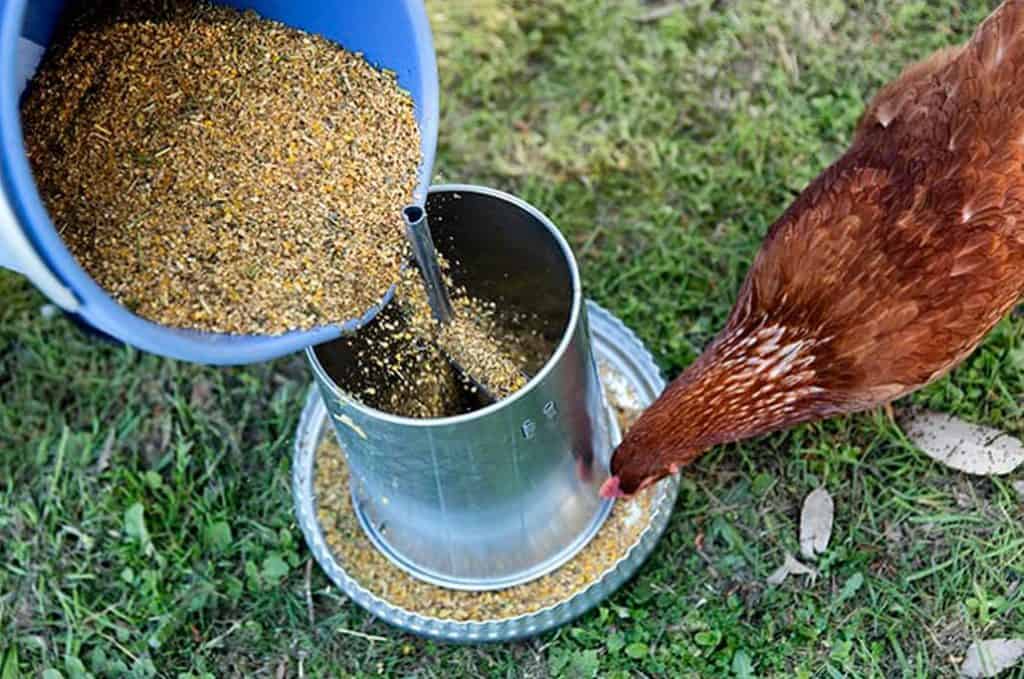
Chicken scratch is actually not a type of chicken feed, but rather is a supplemental treat that should be given alongside regular feed. Scratch is usually made up of a variety of grains and seeds. This can include black oil sunflower seeds, milo, millet, oats, barley, and corn.
You can buy pre-mixed bags of scratch from the store, though bags with more sunflower seeds and milo seeds will be more expensive. You can also make your own scratch to save money.
Since scratch is not as nutritional as regular chicken feed, it shouldn't make up more than 10% of your flock's diet. That means if you regularly give your chickens a half cup of chicken feed, you should give them around 2 1/2 teaspoons of scratch. Scratch isn't necessary for a chicken's diet, but it can help keep them happy.
It's also useful for encouraging them to come in at night, and for creating positive associations. This can come in handy when they have to go through things they don't like such as delousing. It can also help acclimate them to your presence by associating you with their favorite food. If you are interested in making your own chicken scratch feed, please see our article here.
9. Fermented Feed
Fermenting chicken feed can be done with any grains or commercially bought feed. It's a way of preparing feed that will help increase its nutritional benefits and decrease the amount you spend on chicken feed.
This is because fermentation will break down the bonds that hold the proteins and nutrients in grain, making it easier to digest. This also helps chickens absorb more nutritional benefits per cup of feed, which means you need to buy less feed overall.
Fermenting feed is a fairly easy process. You just need a large container with a lid, your regular feed, and water. Fill half the bucket with seed then add dechlorinated water. You should have a few inches of water above your seeds. Secure the lid and let the mixture sit for 3 – 5 days
. Once a day, stir the mixture and add water as needed so the seeds are constantly covered. Once you see bubbles in the water, your feed is ready. Strain the feed and give it to your chickens while it's still wet.
10. Mash
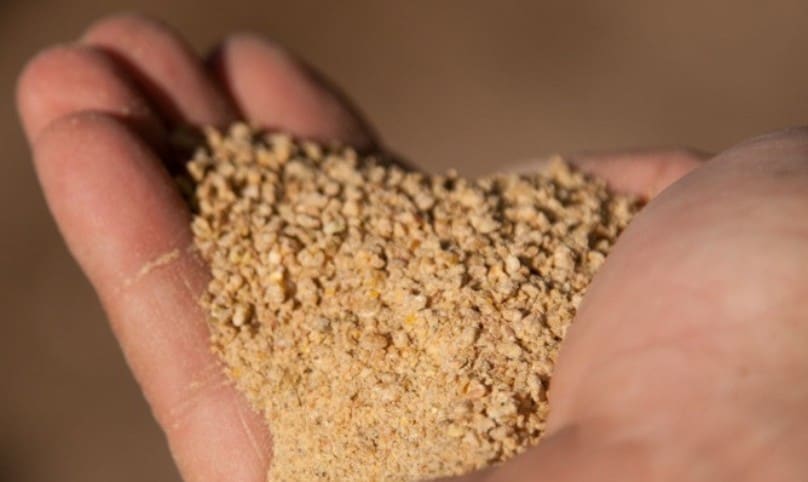
Mash is a form of chicken feed that is so finely ground, it looks almost like powder. All kinds of feed from starter to grower to layer can be bought in mash form. It is most commonly used for chicks as it's easier to eat than even crumbles are.
Some farmers will still feed grown chickens mash, though. Some chickens prefer mash and will eat better if their food is in this form. Mash is also a good way to give your chickens a warm meal in the winter.
Mash can be given in its dry form, though most prefer to mix it with water. Once mixed, it should have a soil-like consistency. Due to the high moisture, any prepared mash that isn't eaten immediately will go bad in no time. Never try to store prepared mash, and clean up any left in your coop.
Summary
There are several different types of chicken feed out there to choose from. Different stages of life usually require different types of feed.
You will also want to pick feed based on why you're raising your chickens. Layers, boilers, and show chickens will all have different requirements. Be sure to consider all these factors when picking out the right feed for your flock.
Source: https://cs-tf.com/chicken-feed/
0 Response to "What to Feed the Different Breeds of Chickens"
Postar um comentário